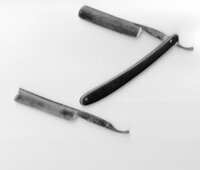Have a couple of vintage razors, a Clover and an Oxford, that I'm trying to get into shape. My first round of honing went from 800 - 10000 combining lapping film and corundum stones. No shaveable results. Before starting again I wanted to check forum wisdom. Should my next round of honing start at sub 800 grit? (What's a good starting grit for difficult blades?) Under 10X inspection the edges do not appear damaged & it's unlikely I've over-honed. My honing technique and materials worked quite well on a Wester Bros razor so I don't think these are issues.
Counsel on tips & tricks much appreciated.
Counsel on tips & tricks much appreciated.

